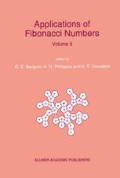Abstract
Assume that N persons want to advance on a stairway. The rule is as follows: They start at level 1. The k ≥ 1 persons who advanced to the level j flip a (fair) coin; the persons with the “1” advance; the others (with a “0”) die. However, there is a demon supervising the game. Usually, he “consumes” one of the survivors. But, with a probability p, he resigns and does not interfere. (The demon can only interfere at levels 2 or larger.) The question is, how far can the party advance, on the average?
Access this chapter
Tax calculation will be finalised at checkout
Purchases are for personal use only
Preview
Unable to display preview. Download preview PDF.
References
Flajolet, P. “Approximate Counting: A Detailed Analysis.” BIT, Vol. 25 (1985): pp. 113–134.
Flajolet, P. and Sedgewick, R. “Digital Search Trees Revisited.” SIAM J. Comput., Vol. 15 (1986): pp. 748–767.
Kirschenhofer, P. and Prodinger, H. “Approximate Counting: An Alternative Approach.” RAIRO Informatique Théorique et Applications. Vol. 25 (1991): pp. 43–48.
Knuth, D.E. The Art of Computer Programming. Vol. 3, Addison-Wesley, Reading, MA, 1973.
Mahmoud, H.M. Evolution of Random Search Trees. Wiley-Interscience Series in Discrete Mathematics and Optimization, New York, 1992.
Nörlund, N.E. Vorlesungen über Differenzenrechnung. Chelsea, New York, 1954.
Prodinger, H. “Hypothetic Analyses: Approximate Counting in the Style of Knuth, Path length in the Style of Flajolet.” Theoret. Comput. Sci., Vol. 100 (1992): pp. 243–251.
Schmid, U. “Analyse von Collision-Resolution Algorithmen in Random-Access Systemen mit dominanten Übertragungskanälen.” Dissertation, TU Wien, 1986, published as “On a Tree Collision Resolution Algorithm in Presence of Capture.” RAIRO Informatique Théorique et Applications. Vol. 26 (1992): pp. 163–197.
Editor information
Editors and Affiliations
Rights and permissions
Copyright information
© 1993 Springer Science+Business Media Dordrecht
About this chapter
Cite this chapter
Prodinger, H. (1993). How to Advance on a Stairway by Coin Flippings. In: Bergum, G.E., Philippou, A.N., Horadam, A.F. (eds) Applications of Fibonacci Numbers. Springer, Dordrecht. https://doi.org/10.1007/978-94-011-2058-6_47
Download citation
DOI: https://doi.org/10.1007/978-94-011-2058-6_47
Publisher Name: Springer, Dordrecht
Print ISBN: 978-94-010-4912-2
Online ISBN: 978-94-011-2058-6
eBook Packages: Springer Book Archive

